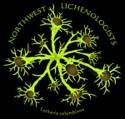Hi Dan - my understanding is that distribution may be more reliable than morphology - here's an excerpt from the attached 2016 paper:
"In an early attempt to distinguish L. lupina from L. vulpina, Goward (1999) called attention to the former’s more vivid yellow thallus, looser branching, and sparser production of isidia. Although these characters do tend to correlate with L. lupina in northern portions of its range, subsequent examination of sequenced material of both L. lupina and L. vulpina from across the irrespective distribution areas has shown that thallus colour, branching and isidia production are highly plastic in these species, and span a similar range of variability (Kroken &Taylor 2001; Ryan 2002; Arnerupet al.2004). Hence we conclude that thallus morphology does not in this case provide a reliable character for species identification,except perhaps locally"
This paper also has a map showing the broader distribution of lupina vs. vulpina s.s. Now if you're in a region where they overlap... maybe call them vulpina group :).
If anyone has experience with sequenced material of these two or read anything more recent, I'd also be interested.
Cheers,
Diane

